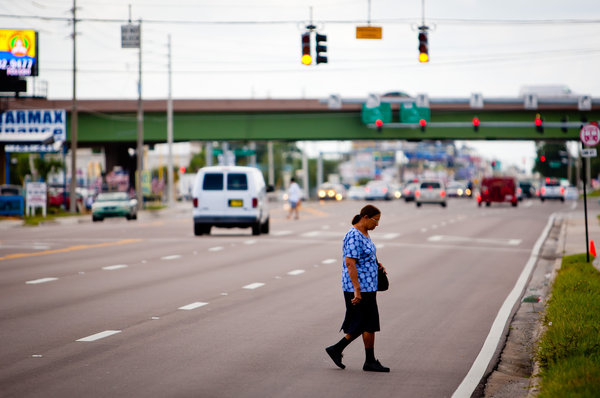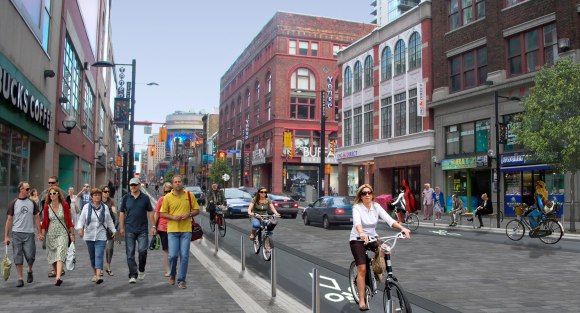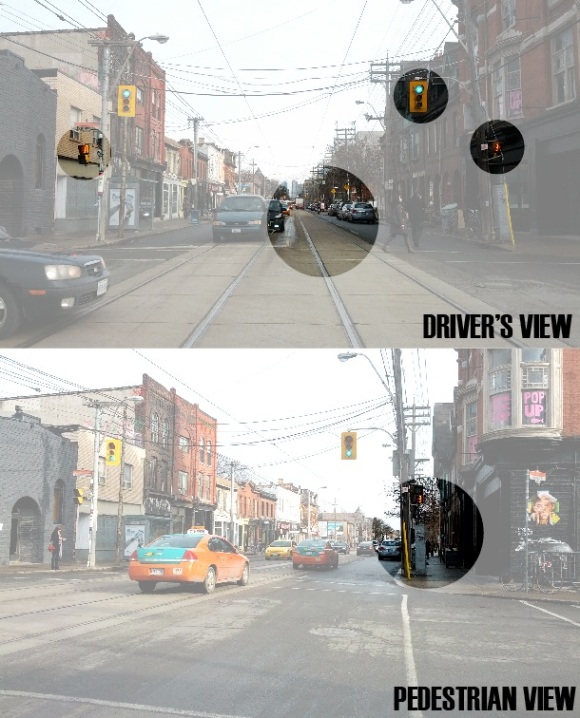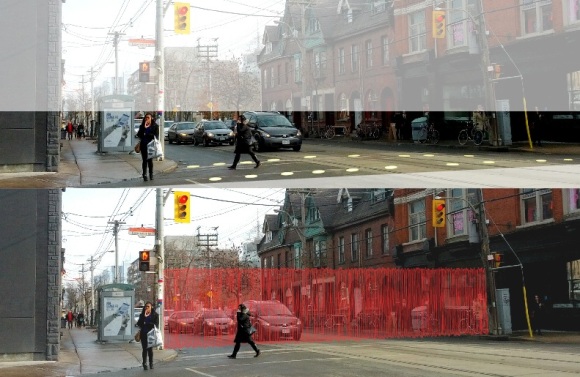
“To err is human – in order to forgive we must design,” said Geni Bahar, President of Navigats Inc. Traffic Safety Consultants.
This morning I was listening to the radio and I heard a familiar sentence: “Every time I approach a cyclist I swear I am going to hit them. Cyclists think they own the road!!” I wonder what he would have thought if he saw this picture:

Lately, there has been a lot of talk about sustainability, sustainable and healthy methods of travel, multimodal travel and connectivity, cyclists, bike lanes, and rapid transit. But the talk always seems to be so negative and confrontational; We can’t afford this! We don’t want that! Get out of my way!…
The recurring theme is selfishness and disrespect. When it comes to transportation, most people are biased because their opinions originate from an unbalanced point of view – typically their own.

To solve a problem, there must first and foremost be awareness. I think that the negativity, the conflict, the selfishness, the disrespect, and consequently the case-by-case collisions and unfortunate deaths are hopefully not in vain. Rather, the world, and especially North America, is beginning to undergo a culture shift – a new status quo for how people get around and they are posing the following question: who owns the road? The answer is: no one. No one traveller “owns the road.” Because everyone must share the road. And the reason there is so much negativity right now is because change is uncomfortable, especially when we are trying to change the way everyone goes about their days in order to adopt new frameworks. Our cities are already the way that they are, and habits have historically followed infrastructure. Now, our mentality and point of view have been normalized into understanding that everyone needs a car to get around – that is simply the way it is around here. But car-oriented-development is not sustainable (by sustainable I mean every kind), and we must change our ways. This change is putting more pedestrians and cyclists on roads that are not yet designed for sharing, and that are filled with uneducated users. Drivers are beginning to get frustrated and are developing negative and incorrect views against cyclists. Not many people know this, but cyclists must legally take the lane. So the next time you’re driving down Bloor St. W in downtown Toronto (why are you driving there anyway?) and a cyclist is driving in the lane in front of you, don’t tell them to get out of the way, because believe it or not you are obliged to drive behind them until you each go your own ways. And to the cyclist – respect will only come to you if you are a respectful and educated cyclist. You’ve got to pull your weight too.
Now drivers, cyclists, and pedestrians – you are probably going to argue with me and tell me that you can’t follow the rules because no one else is going to, and if you’re the only one playing the safety game then you’re going to get hurt. I agree – until the culture shift has fully developed, every road user must take precautions by leaving room for forgiveness. By this I mean, don’t just take the lane without making sure the vehicles around you are going to let you. Of course they should let you, but drivers are still stubborn and sometimes even overly-aggressive, and you probably want to at least check and signal before making them feel like you’re trying to get in their way. And drivers – cyclists need to leave room for you too, especially since it’s a lot more difficult for you to check blindspots etc. But if they don’t, you need to check for them – the last thing you want is to be the reason another cyclist was hit, wether it was your fault or theirs. Pedestrians – I know you’re angry because no one has time to wait for you to cross the street, and so you cross the street without looking to prove a point. But what kind of point does that prove when you’re dead? Even when it can’t be more obvious that it’s your right-of-way, do me a favor and check anyway.
Drivers, cyclists, and pedestrians – follow the rules, but also learn to leave room for forgiveness.
 We are currently undergoing a drastic culture shift. Changing the status quo. Taking everyone out of their comfort zone. Altering infrastructure. Updating goals and objectives in all of our plans. It’s going to be hard to become aware, to understand, and to accept any of this, and we are all going to have our differing opinions on the subject. But one day, we will learn to accept a new and more sustainable lifestyle. We will need to adopt education into our curriculum to inform future generations. Until then, don’t forget to share the road.
We are currently undergoing a drastic culture shift. Changing the status quo. Taking everyone out of their comfort zone. Altering infrastructure. Updating goals and objectives in all of our plans. It’s going to be hard to become aware, to understand, and to accept any of this, and we are all going to have our differing opinions on the subject. But one day, we will learn to accept a new and more sustainable lifestyle. We will need to adopt education into our curriculum to inform future generations. Until then, don’t forget to share the road.
For more information about sharing the road, please check out this inspiring initiative founded by an inspiring woman: www.sharetheroad.ca
For more information about respect for cyclists, check out this service: http://www.respect.to/wp/
 Since automobile dependence has been engrained into American city designs from the start, many regions are interested in adopting Complete Streets policies into their own Official Plans, in order to move forward in a more sustainable and safe manner through design. This is part of the reason why roundabout, public transit and bike lane funding have become such hot topics, for example.
Since automobile dependence has been engrained into American city designs from the start, many regions are interested in adopting Complete Streets policies into their own Official Plans, in order to move forward in a more sustainable and safe manner through design. This is part of the reason why roundabout, public transit and bike lane funding have become such hot topics, for example.














